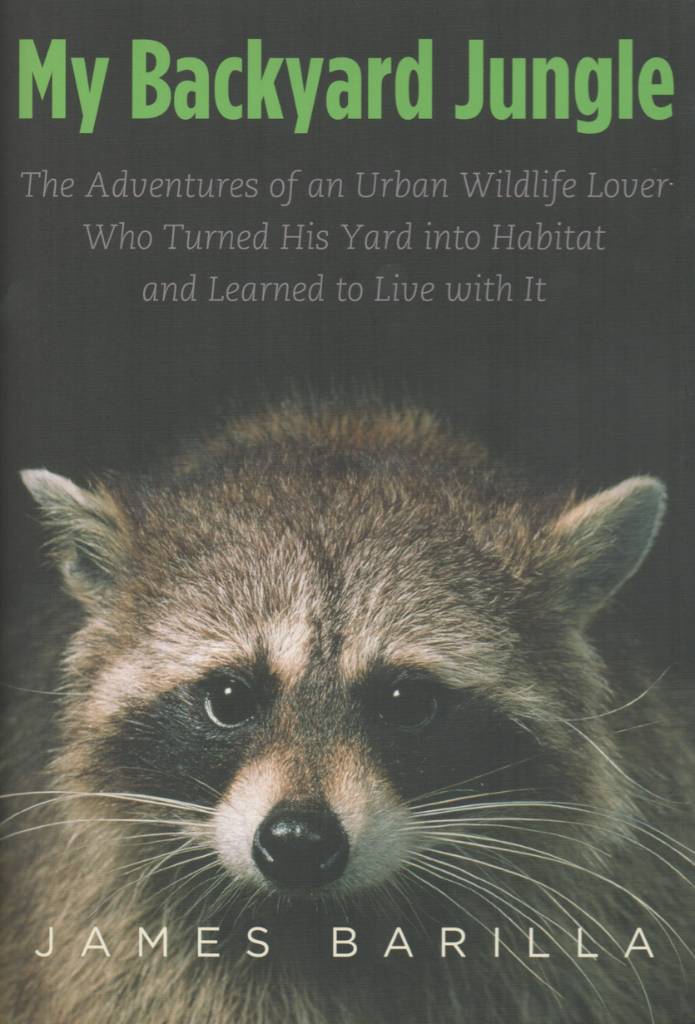My Backyard Jungle
The adventures of an urban wildlife lover who turned his yard into a habitat and learned to live with it by james barilla.
by Nancy Kerstetter
As a first time homeowner, James Barilla embraces the concept of turning his suburban backyard in to a wildlife habitat. Located in Columbia, South Carolina, Barilla explores the almost limitless types of vegetation he can add to his backyard jungle to make an eden for his family and the wildlife living close by. Ironically, he chooses to plant fruit trees but does not want to share the bounty with the critters. In My Backyard Jungle: The Adventures of an Urban Wildlife Lover Who Turned His Yard into Habitat and Learned to Live with It, the author relates his adventures in peaceful coexistence with the animals who visit or live in his yard.
 It sounds as if Barilla should have done his homework before proceeding. In fact, he served in a variety of assignments in wildlife research and management in the United States and England before turning to teaching creative nonfiction and environmental writing at the university level. As a knowledgeable wildlife enthusiast, he should have known better but he seems surprised when a squirrel strips his peach tree of all its ripening (and unripe) fruit.
It sounds as if Barilla should have done his homework before proceeding. In fact, he served in a variety of assignments in wildlife research and management in the United States and England before turning to teaching creative nonfiction and environmental writing at the university level. As a knowledgeable wildlife enthusiast, he should have known better but he seems surprised when a squirrel strips his peach tree of all its ripening (and unripe) fruit.
Barilla narrates his trial and error method of peaceful coexistence in an engaging manner. He begins with the simple task of becoming a National Wildlife Federation Certified Wildlife Habitat by providing the four essential criteria for wildlife in his yard. They are food, water, cover and a place for wildlife to raise their young.
Then he ponders the big question of how is it possible for people and animals to live in close contact. Barilla goes a bit offtrack in pursuit of an answer. He travels to Dania, Florida, and New Delhi to see how monkey fare living in the city. Then he visits his home state of Massachusetts to see how the black bears coexist with residents in neighborhoods of Northampton. Next he visits Brooklyn, New York, to study bees in the city. Finally he explores a few sites in Brazil in search of tamarin. Although each of these accounts is interesting (except the long-winded, convoluted chapter on India), they detract from the stated main thrust of this tome: one’s backyard. Fortunately, he intersperses these expeditions with chapters of anecdotes about his personal backyard wildlife exploits.
Overall, Barilla could have spent more time sharing insights from his domestic encounters and less time globe trotting. Still My Backyard Jungle is a satisfying read. It’s a peach even if a small segment resembles the pit. After all, who can blame the peach-eating squirrel? He was following his natural instincts in devouring the official state fruit of South Carolina where he too is a resident.
You can obtain this book from your local library, interlibrary loan or from Amazon: My Backyard Jungle: The Adventures of an Urban Wildlife Lover Who Turned His Yard into Habitat and Learned to Live with It
.
Read about our early experiences as a registered wildlife habitat.